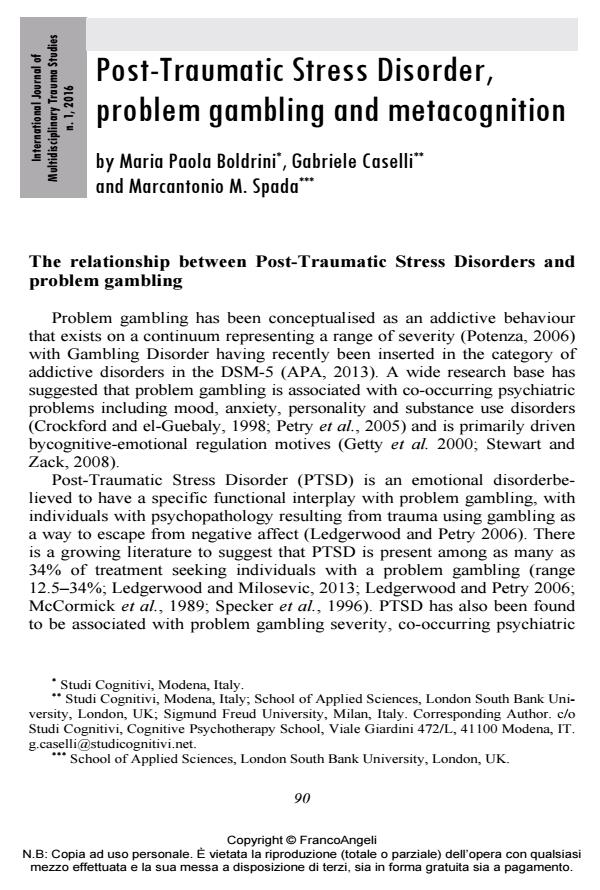Post-Traumatic Stress Disorder, problem gambling and metacognition
Journal title INTERNATIONAL JOURNAL OF MULTIDISCIPLINARY TRAUMA STUDIES
Author/s Maria Paola Boldrini, Gabriele Caselli, Marcantonio M. Spada
Publishing Year 2016 Issue 2016/1
Language English Pages 10 P. 90-99 File size 184 KB
DOI 10.3280/IJM2016-001009
DOI is like a bar code for intellectual property: to have more infomation
click here
Below, you can see the article first page
If you want to buy this article in PDF format, you can do it, following the instructions to buy download credits

FrancoAngeli is member of Publishers International Linking Association, Inc (PILA), a not-for-profit association which run the CrossRef service enabling links to and from online scholarly content.
Over the last twenty years meta-cognitive theory has been applied to the conceptualization and treatment of psychological distress (Wells, 2009). In this paper we consider the evidence linking Post-Traumatic Stress Disorder and problem gambling. This is followed by an overview of the role of metacognition in psychopathology and its specific application to the conceptualisation and treatment of Post-Traumatic Stress Disorder. We then proceed to discuss the possible role of metacognition in the relationship between Post-Traumatic Stress Disorder and problem gambling, and conclude by considering the clinical implications of metacognitive therapy for the transdiagnostic treatment of these co-occuring conditions.
Keywords: Meta-cognition, meta-cognitive therapy, PTSD, problem gambling, co-morbidity.
- The relationship of internet addiction symptom severity with posttraumatic stress disorder symptoms and impulsivity among Turkish university students Bilge Evren, Ercan Dalbudak, Cuneyt Evren, Secil Ozen, in Psychiatry and Clinical Psychopharmacology /2019 pp.83
DOI: 10.1080/24750573.2018.1505422
Maria Paola Boldrini, Gabriele Caselli, Marcantonio M. Spada, Post-Traumatic Stress Disorder, problem gambling and metacognition in "INTERNATIONAL JOURNAL OF MULTIDISCIPLINARY TRAUMA STUDIES" 1/2016, pp 90-99, DOI: 10.3280/IJM2016-001009